US President Donald Trump and Saudi Crown Prince Mohammad Bin Salman Al Saud. Photo: Getty Images.
US President Donald Trump is planning to visit Saudi Arabia in May, his first international trip since beginning his second term as president.
Saudi Arabia is seen as a potential venue for talks between Donald Trump and his Russian counterpart Vladimir Putin. Notably, delegations from both Russia and the US have held meetings in Riyadh.
Despite these diplomatic communications, the White House has yet to officially reveal the purpose of Trump’s visit. According to Axios, the main goal of the trip is to strengthen partnerships with Gulf states and discuss ways to stabilize the situation in the Middle East.
It is worth noting that Saudi Arabia was also the destination of Donald Trump's first foreign trip during his first presidential term in 2017. At the time, the choice of Riyadh was seen as a symbolic gesture, emphasizing the strategic importance of the region to Washington.
Sources cited by Axios said the trip was originally scheduled for April 28 but was postponed until mid-May. Saudi Arabia had reportedly hoped to host the US leader after a ceasefire between Russia and Ukraine was established, which would give the visit more weight in the context of global peace efforts.
It should come as no surprise that Donald Trump’s first foreign trip of his second term will be to the Middle East. Moreover, Saudi Arabia will be just the first stop on the tour, with visits to Qatar and the United Arab Emirates also planned. These countries now form a triangle of political and economic influence in the Gulf and have become key partners for Washington in the changing global geopolitical landscape.
The path the US president has chosen reflects not only America’s current diplomatic priorities but also a deeper shift in the global positioning of foreign policy. Unlike the EU, where attitudes toward Mr Trump have been cautious, if not openly critical, the Gulf states are showing a willingness to engage in dialogue and even close cooperation. They and the US share a pragmatic outlook: an interest in regional stability, economic growth, energy cooperation and containing regional rivals like Iran.
Today, the Gulf states are no longer just oil monarchies; they are real players on the international stage. Saudi Arabia is pushing a massive modernization program known as Vision 2030, which aims to diversify its economy and strengthen its geopolitical clout. Qatar, despite its small size, has become an influential mediator in regional conflicts and plays an active role in humanitarian and diplomatic affairs. For its part, the UAE positions itself as a hub for technological innovation and logistics, aspiring to become the “Singapore of the Middle East.” These countries have long transcended regional importance and are now actively shaping agendas not only within the Middle East but also on the international stage.
The contrast with the EU is stark. Relations between the United States and the bloc are currently strained. Washington is frustrated by Brussels’ lack of a unified foreign policy stance, internal crises in key EU member states, and its limited involvement in practical international security issues. Still reeling from the energy and migration crises, Europe faces challenges to its internal cohesion and its economic competitiveness is declining. Against this backdrop, Europe’s importance in the US strategic plan is gradually being replaced by more dynamic and resource-rich partners.
Donald Trump’s focus on the Middle East is therefore not only a logical continuation of his path toward a pragmatic alliance with politically convenient and economically significant states, but also a signal of a reassessment of traditional centers of power. While Western Europe is now a region of instability, the Gulf states are islands of stability, ambition, and opportunity—assets that the US administration wants to convert into geopolitical dividends.
One of the key factors that has shaped the foreign policy priorities of Donald Trump’s second term is his clear economic pragmatism. His team is essentially a coalition of politicians and businessmen, many of whom came to the White House from the corporate world, where efficiency and profit are the main norms. That is why the interest in the Gulf states is driven not only by geopolitical considerations but also by deep economic motivations.
Saudi Arabia, Qatar and the United Arab Emirates are not just security allies, they are among the world’s wealthiest nations, with huge sovereign wealth funds that diversify assets globally. For Washington, this is an opportunity to attract significant investment into the US economy, from infrastructure and technology to real estate.
Energy will also be a focus of Donald Trump’s visit and negotiations. Despite rising domestic oil and gas production, the US remains interested in keeping global energy prices relatively stable and, ideally, low. This is especially important in the context of efforts to combat inflation and promote domestic economic growth. The Gulf states, major oil and gas producers, play a key role in setting global energy prices. Washington is therefore looking to coordinate strategic approaches to regulating energy markets.
Donald Trump’s upcoming visit to the Middle East in May cannot be viewed solely through the lens of diplomatic protocol or the traditional consolidation of alliances; it is a trip rich in strategic, economic and geopolitical content. The itinerary chosen reflects not only Washington’s regional interests but also the broader architecture of foreign policy priorities, built around power, influence and economic gain.
Amid rising tensions between the US and Iran, Donald Trump is seeking to strengthen America’s position in the region through a close alliance with leading Arab monarchies. Iran’s rhetoric and actions have become more strident in recent months, raising serious concerns in Washington. In this context, the Gulf states – long-time rivals of Iran – are natural allies for the US. Joint efforts to contain Tehran, coordination on defence policy, the development of joint military initiatives and potential participation in a regional security framework will all be important topics of discussion in Riyadh, Doha and Abu Dhabi.
But America’s regional strategy goes much further than simply containing Iran. One of the main goals of his trip is to advance his plan to normalize relations between Israel and the Arab world, a continuation of the so-called Abraham Accords initiated during his first term. Donald Trump sees himself as the architect of a unique shift in Middle Eastern politics, in which countries that were hostile to Israel have begun to move closer together in exchange for US security guarantees, investment, and diplomatic mediation. With the current escalation of the conflict between Israel and the Gaza Strip, Donald Trump is seeking the support of Arab leaders to craft a new approach to the Palestinian issue.
Essentially, the goal is to create a new regional consensus: Washington is offering Gulf leaders not only a stake in the peace process, but also the opportunity to become its formal architects. Achieving this requires a delicate balance between Israeli interests and the need to address the Palestinian position, a challenge by any measure. However, Arab countries, especially the UAE and Qatar, have enough political clout, financial resources, and channels of influence to act as mediators, as long as their involvement is consistent with their own strategic interests and international standing.
All of these diplomatic, strategic, and economic goals are interconnected. The U.S. administration, which includes many business-minded figures, sees strengthening economic ties with the Gulf not only as a way to attract investment but also as a tool to influence the regional agenda.
In this view, Donald Trump is heading to the Middle East with a comprehensive agenda: countering Iran, promoting a new Middle East peace model, building economic partnerships, and strengthening his own political position internationally and domestically.
TD (according to RT)
Source: https://baothanhhoa.vn/he-lo-muc-dich-cong-du-trung-dong-cua-tong-thong-my-donald-trump-245923.htm


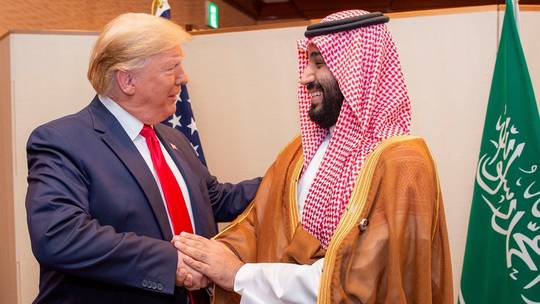
![[Photo] Prime Minister Pham Minh Chinh starts construction of vital highway through Thai Binh and Nam Dinh](https://vphoto.vietnam.vn/thumb/1200x675/vietnam/resource/IMAGE/2025/5/12/52d98584ccea4c8dbf7c7f7484433af5)
![[Photo] Prime Minister Pham Minh Chinh receives Swedish Minister of International Development Cooperation and Foreign Trade](https://vphoto.vietnam.vn/thumb/1200x675/vietnam/resource/IMAGE/2025/5/12/ae50d0bb57584fd1bbe1cd77d9ad6d97)
![[Photo] Prime Minister Pham Minh Chinh works with the Standing Committee of Thai Binh Provincial Party Committee](https://vphoto.vietnam.vn/thumb/1200x675/vietnam/resource/IMAGE/2025/5/12/f514ab990c544e05a446f77bba59c7d1)






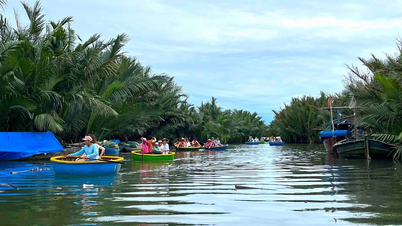
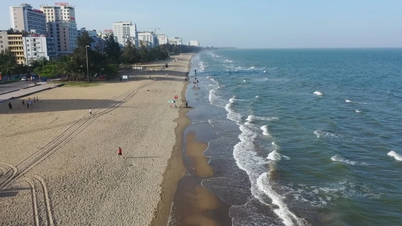





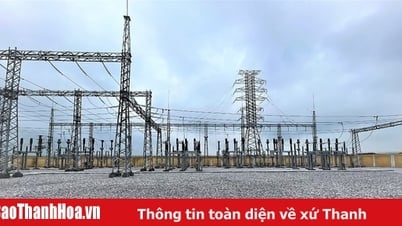






































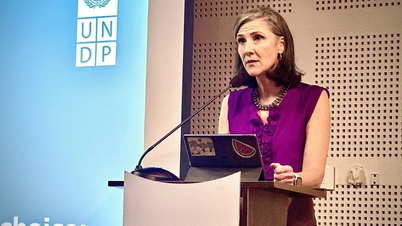

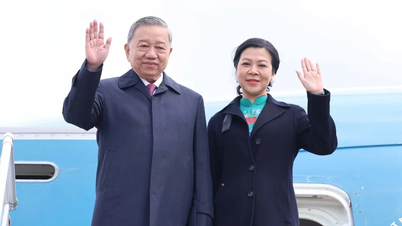
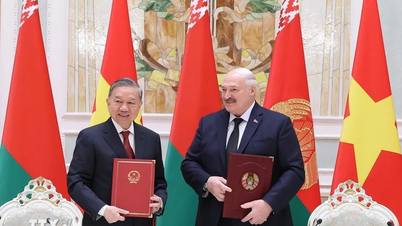














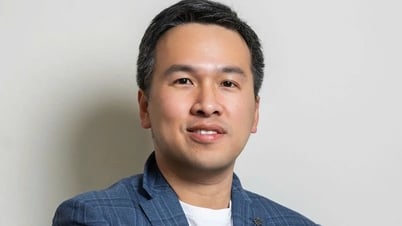
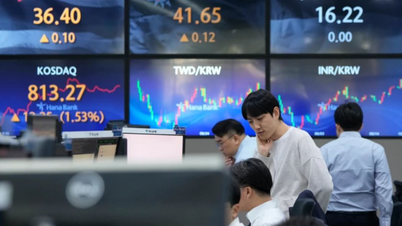














Comment (0)